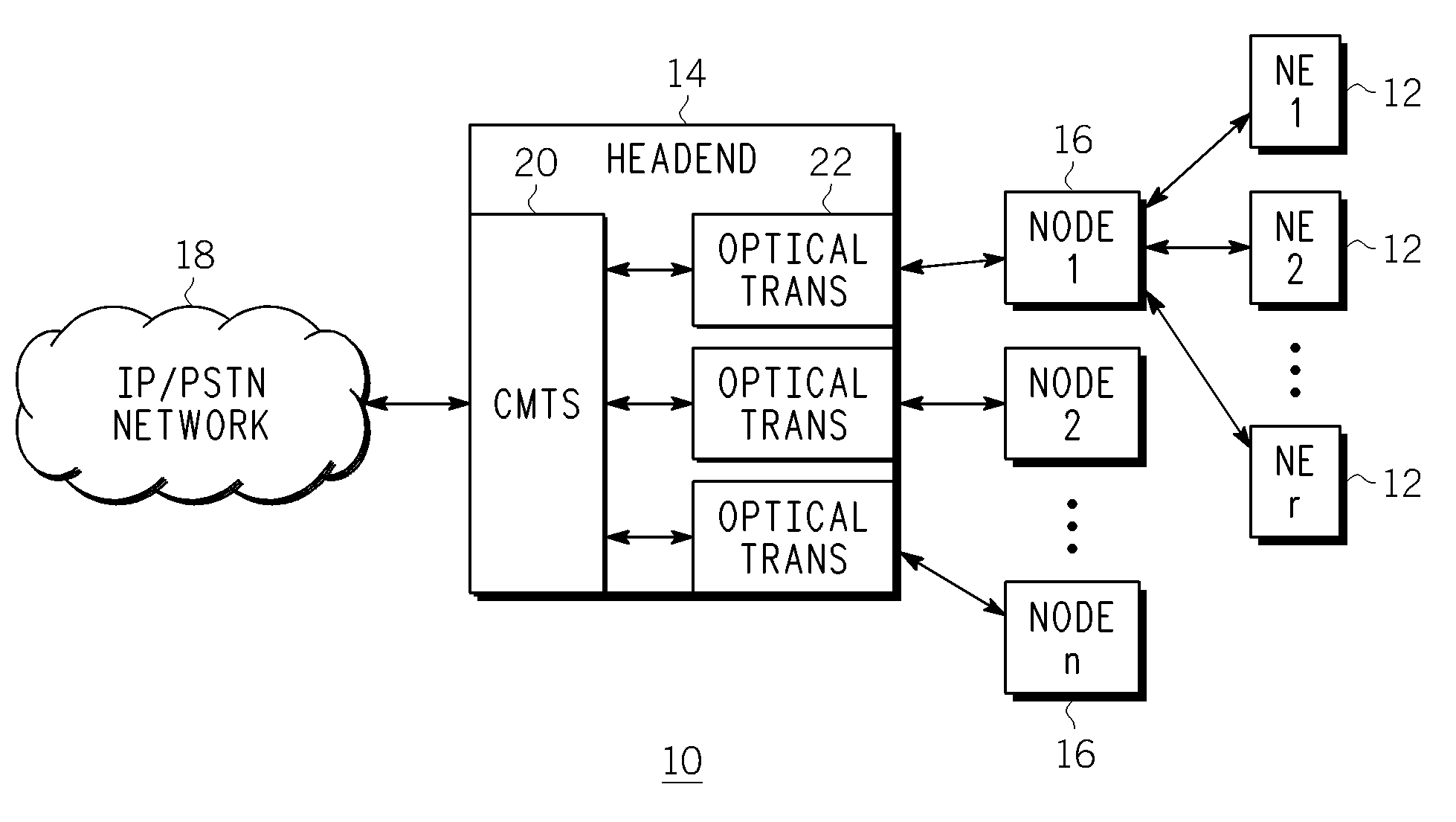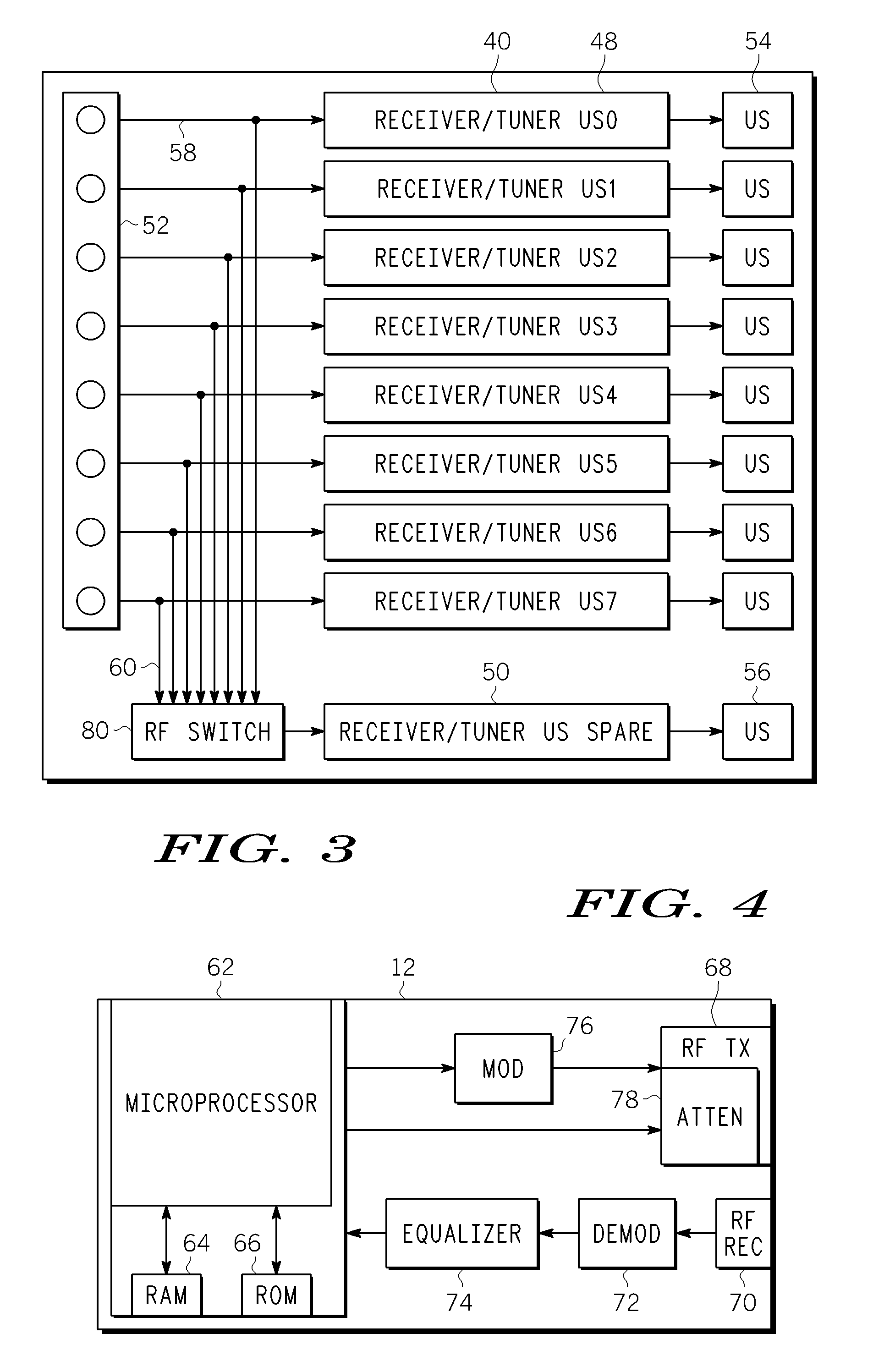Methods and System for Determining a Dominant Impairment of an Impaired Communication Channel
a communication channel and impairment technology, applied in the field of methods and systems for determining the impairment of an impaired communication channel, can solve the problems of reducing the complexity of complex modulation schemes, and reducing the degree of impairment. the effect of identifying
- Summary
- Abstract
- Description
- Claims
- Application Information
AI Technical Summary
Benefits of technology
Problems solved by technology
Method used
Image
Examples
Embodiment Construction
[0029]Before turning to detailed descriptions with respect to processes for determining and / or characterizing the nature of the dominant impairment present on a communication network, a description of a basic network set-up and associated apparatus and elements is provided.
[0030]For this purpose and by way of example, FIG. 1 illustrates an exemplary network 10, such as an HFC network, including a plurality of end user terminal network elements 12, such as cable modems, set top boxes, televisions equipped with set top boxes, DOCSIS terminal devices, MTAs or any other like element. The terminal network elements 12 interconnect to a headend 14 of the network 10 via nodes 16 and one or more taps (not shown). In turn, the headend 14 interconnects to an IP (Internet Protocol) and / or PSTN (Public Switched Telephone Network) network 18.
[0031]As illustrated in FIG. 1, the headend 14 includes a cable modem termination system (CMTS) unit 20 and optical transceivers 22 which provide optical com...
PUM
 Login to View More
Login to View More Abstract
Description
Claims
Application Information
 Login to View More
Login to View More - R&D
- Intellectual Property
- Life Sciences
- Materials
- Tech Scout
- Unparalleled Data Quality
- Higher Quality Content
- 60% Fewer Hallucinations
Browse by: Latest US Patents, China's latest patents, Technical Efficacy Thesaurus, Application Domain, Technology Topic, Popular Technical Reports.
© 2025 PatSnap. All rights reserved.Legal|Privacy policy|Modern Slavery Act Transparency Statement|Sitemap|About US| Contact US: help@patsnap.com



